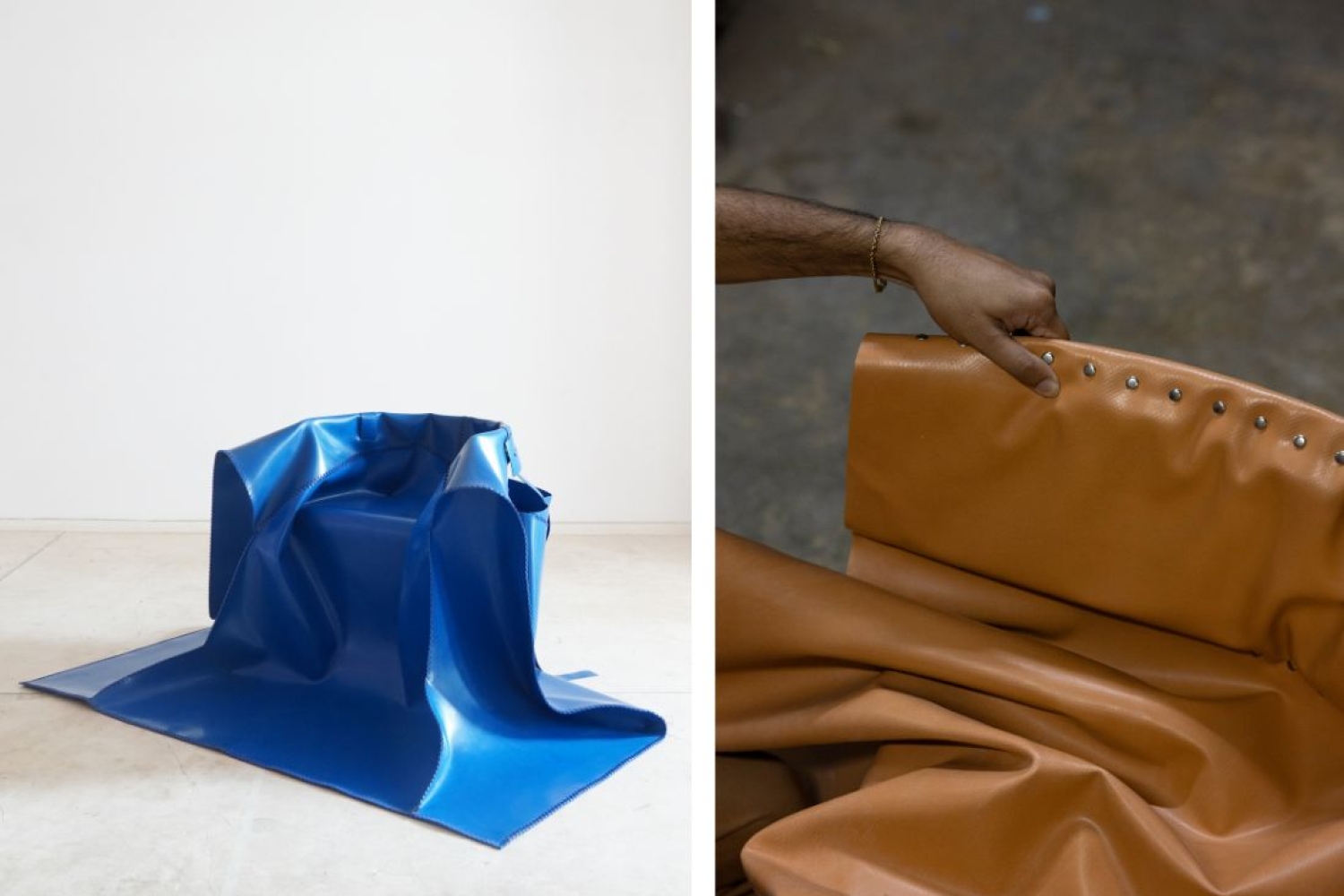

When Sudheer Rajbhar of Chamar Studio started working with artisans keeping an alternative material at the centre of their process, he knew he had a long and complex road ahead. Artisans bring traditional skills, and balancing these with contemporary design visions can sometimes be complex. Introducing alternative materials, especially in place of leather, added another layer of complexity. 'Materials like recycled rubber or other non-leather options require innovation in both technique and design to ensure they retain the durability and aesthetic appeal associated with leather. Sustaining such a brand likely involves continuous experimentation, not only in design but also in sourcing sustainable materials and finding the right market that values this approach. The challenge is also in conveying the story behind the product to ensure that consumers appreciate the craftsmanship and ethos behind each piece.' But year after year, Sudheer has tirelessly worked for his design studio that gives livelihood to multiple artisans.
In 2022, Aequo brought together Sudheer and Camille to collaborate on a unique collection of sculptural furniture, featuring rubber as the primary material. Their standout creation, the "Pocket Chair," designed in partnership with Aequo, garnered significant attention for its striking blue hue, distinct forms, glossy texture, and the compelling narrative behind it, reflecting the brand's artistic vision and social commitment to its craftsmen.
In their latest collection, Sudheer Rajbhar, along with creative associate Camille Bastien and master craftsman Rahul Gore, has crafted an array of captivating armchairs. Each piece, constructed on a shared metal framework, embodies unique stylistic elements inspired by fashion, showcasing features like oversized stitching, extravagant pockets, and belts. Developed akin to fashion ensembles, these designs underwent meticulous refinement and iteration before the final versions were perfected. These impressive creations not only highlight the diverse techniques honed by Chamar but also feature refined colour palettes developed over the past nine years.
Desire for Bold Design
The series of dramatic armchairs stemmed from the desire to create bold, statement pieces that not only serve a functional purpose but also embody the aesthetic principles of Chamar Studio. The initial conversations with Camille and Rahul revolved around the intersection of modern form with traditional craft. I discussed how to translate the raw, tactile nature of the materials into dramatic forms that express more than mere functionality creating pieces that evoke an emotional response.
Detailed techniques
The intricate process likely required close collaboration with the artisans. Together, you may have explored how to adapt traditional skills to new materials and forms, experimenting with techniques that highlight the texture, durability, and versatility of alternative materials. This involved many trials to perfect the techniques that balance aesthetic appeal with craftsmanship.
Colour Palette
The choice of colors was influenced by a variety of factors symbolism, contrast with the raw material, or the intended mood of the piece. Certain colours may represent concepts like sustainability, boldness, or serenity. The palette could be a reflection of both the studio’s design philosophy and the values behind the collection.
Collaboration with Aequo
The collaboration with Aequo came about due to shared values of sustainability and design innovation. Perhaps the dialogue started around how both could merge their unique approaches to create something that resonates with both their audiences
Qualities of good design
For furniture and accessories, good design may be defined by a combination of form, function, sustainability, and emotional impact. It needs to be aesthetically appealing, serve a purpose, and tell a story. For Chamar Studio, this might also mean using design as a means of advocacy showing that luxury and sustainability are not mutually exclusive, and that traditional crafts can be reinterpreted for modern, socially-conscious consumers.
Words Hansika Lohani
Date 10.09.2024